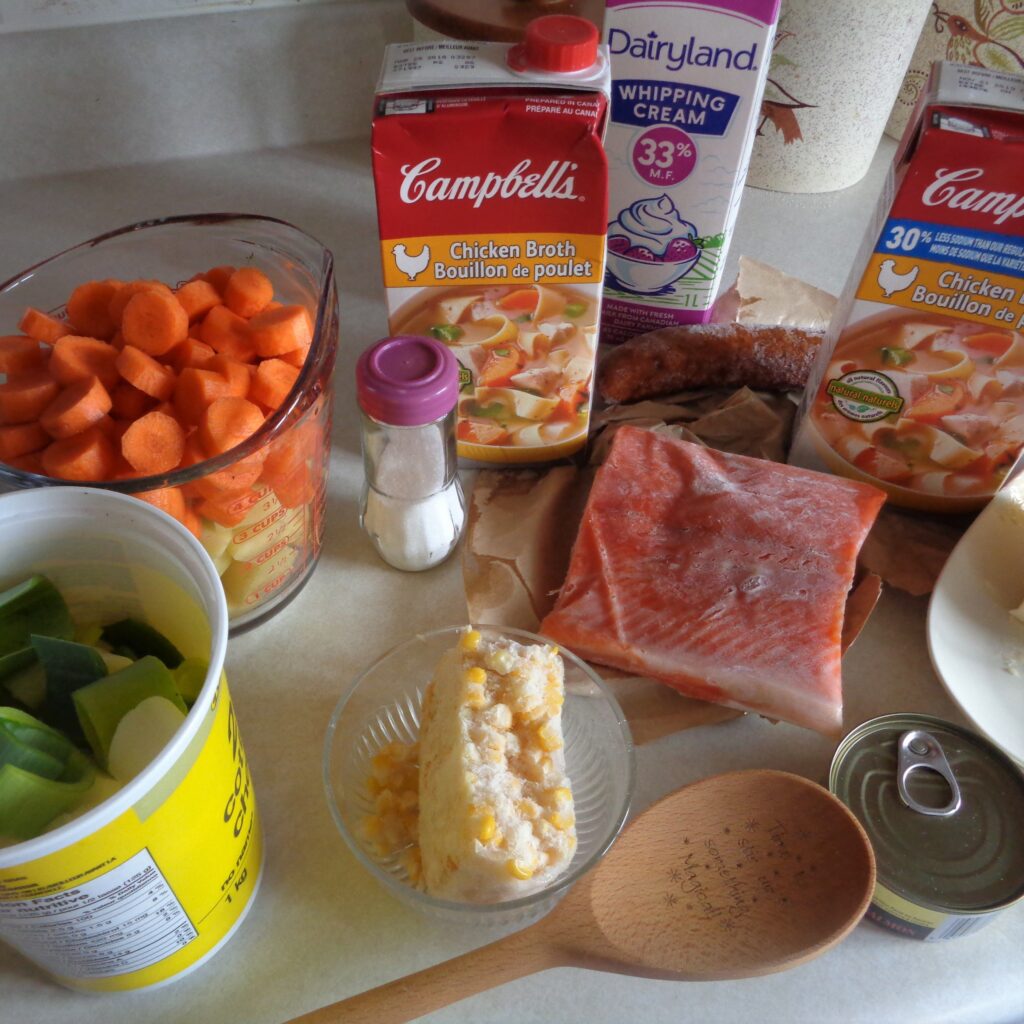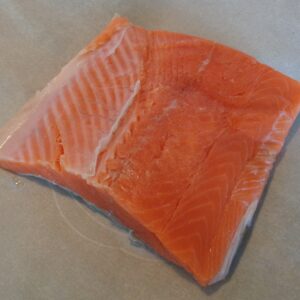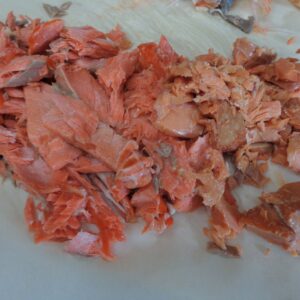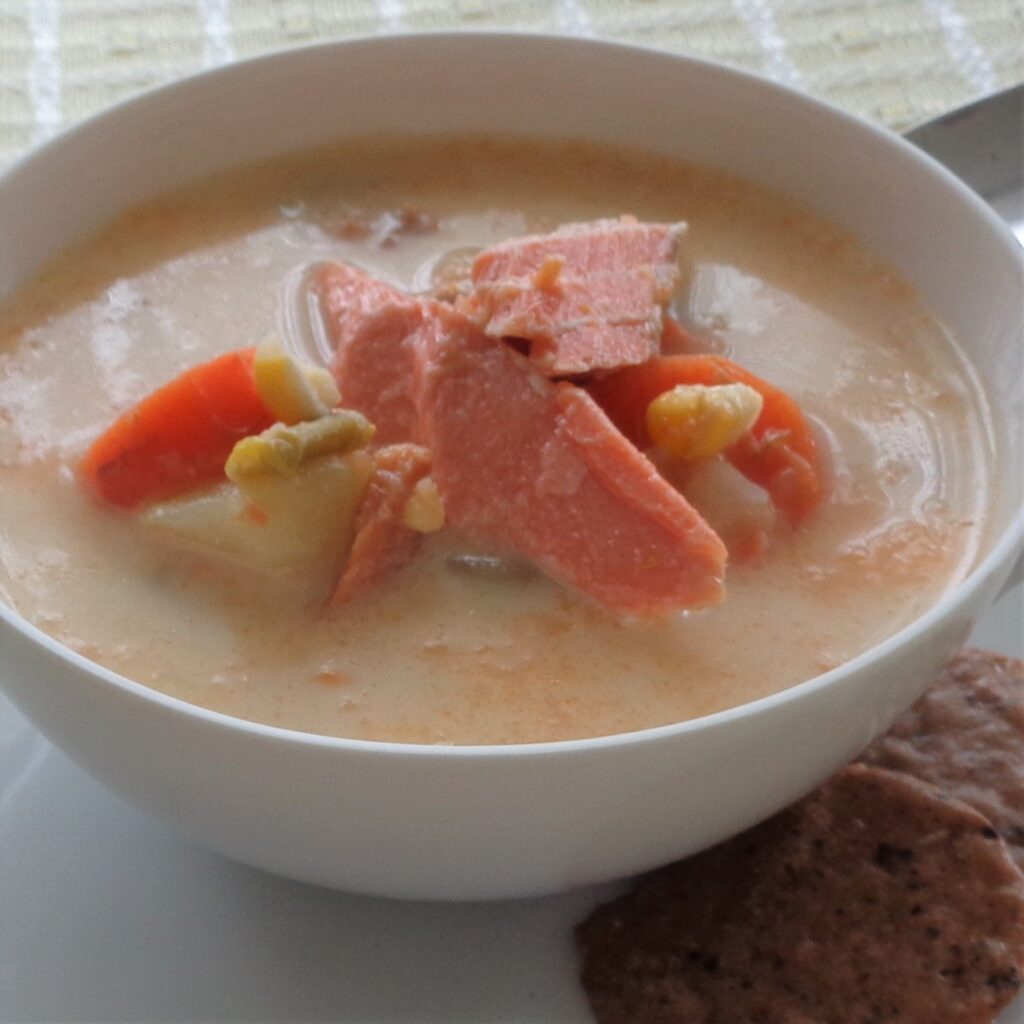With so much coastline in the United Kingdom, it is not surprising that, historically, fish would have been such a big part of the local diet. Joanne Asala in Celtic Folklore Cooking, shares a whole chapter of “Fish, Shellfish and Seaweed”, highlighting salmon as a sacred food for this time on the wheel of the year. She writes that” the earliest gods and goddesses rose from this watery abode to help and hinder the lives of humans and many legends link our own beginnings with the sea. The sea was thus worshipped, prayed to, feared and sacrificed to”.
Because I have personally, always liked the idea of communal dishes when celebrating, this chowder made with both cooked and smoked salmon is a lovely choice for both St. Patrick’s Day and Ostara. If finding fresh salmon is a challenge where you live, then tinned is a reasonable alternative. You will need:
You will need:
1/2 cup butter
2 fresh leeks
5 1/4 cups chicken stock or vegetable stock if the finished product should be vegan
3 cups yellow potatoes, peeled and diced
2 cups carrots, piled and sliced
1/2 cup frozen corn or fresh if available
1/4 cup whipping cream
1 1/2 cups salmon ( baked or tinned)
3.5 oz. smoked salmon
salt & pepper to taste (If you have any herbed salt at home, this would be a tasty place to use it)
This Celtic Fisherman’s Prayer is also in Celtic Folklore Cooking. “Pray White Lady lead us, Pray White Lady speed us, From all evil defend us, Fish for our pains do send us. Well to fish and well to haul, and what you please to pay us all. A fine night to cast our nets, and safely to the land return. Pray Lady hear our prayer.”
 Celtic traditions honour both the sun and the moon and it was not uncommon, particularly amongst Manx fisherman (yes, where the cats come from) on the Isle of Man, that while on board a ship these heavenly bodies were not specifically named, hence White Lady.
Celtic traditions honour both the sun and the moon and it was not uncommon, particularly amongst Manx fisherman (yes, where the cats come from) on the Isle of Man, that while on board a ship these heavenly bodies were not specifically named, hence White Lady.
As you gather the ingredients to begin, save a free moment to thank the White Lady for all her blessings. Bring your focus into the present moment and let go of what has gotten between your heart and your intentions today. Deepen your breathing to help let go of any stress and remember that all intentional work in love in action. Begin.
If no salmon, fresh, frozen or leftover, is readily available and the decision was to use tinned salmon, then skip these beginning steps.
Preheat a toaster oven to 425 degrees F. If the fish is all the heat is  needed for it is quicker than heating the full oven. If however you are whipping up a batch of soda bread to go with the soup then go for the larger option.
needed for it is quicker than heating the full oven. If however you are whipping up a batch of soda bread to go with the soup then go for the larger option.
Wash and pat down the piece of salmon. Take out any remaining bones in the filet and sprinkle with salt and pepper. Wrap in parchment paper and place on a tray or put into a shallow container with a lid. For easy clean up, place a piece of greased foil in the bottom of the casserole dish.
A one inch thick piece of salmon typically takes about 12-14 minutes and will be 145 degrees when a thermometer is used to test the thickest part of the fillet.
Place the salmon in the oven until just cooked.
 Once cool enough to handle, remove the skin and break into smaller pieces. I like a mixture of sizes so that I can highlight a few larger pieces when serving the finished chowder.
Once cool enough to handle, remove the skin and break into smaller pieces. I like a mixture of sizes so that I can highlight a few larger pieces when serving the finished chowder.
Put the salmon aside.
During the time that the salmon has been baking, start preparing the chowder itself.
Place the butter in a large pot and allow to melt while washing, cleaning and chopping the leeks. Once the butter has melted, add the leeks and cook until the leeks are wilted
Wash, peel and slice or dice the carrots and potatoes.
 Add the vegetables and stock to the leeks. Bring to a boil and then reduce the heat to a simmer until the vegetables are tender.
Add the vegetables and stock to the leeks. Bring to a boil and then reduce the heat to a simmer until the vegetables are tender.
Open the can of smoked salmon and drain.
Add the frozen corn and thaw in the hot chowder.
Place both salmon options into the pot and let them heat through. As they are cooked there is no need for them to spend a lot of time simmering in the chowder.
When ready to serve add the whipping cream and stir. Do not boil.
Add salt and pepper to taste and serve. This is a fine time to use your herbed salt if you made up a batch last summer. Joanna suggests that salt and pepper may have first been combined, in Ireland, as a protection spell for the home, used by scattering the spices around the boundaries of your property.
Salt in any early Irish recipes would have been sea salt, made from local ocean waters. Sea salt along with honey were both used in preserving food and were symbols of rebirth. Sea salt was also used as a substitute for blood in ceremony as it was thought of coming from the womb of the ocean goddess.
Two Salmon Chowder from My Kitchen Wand


